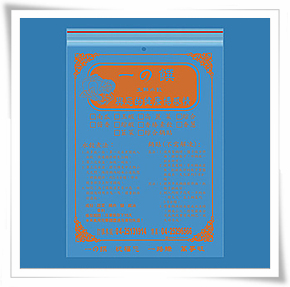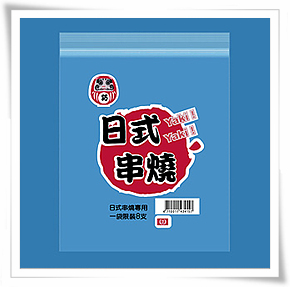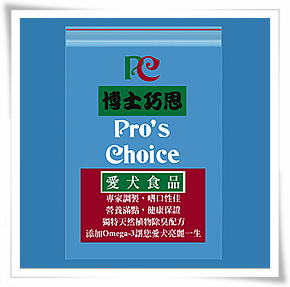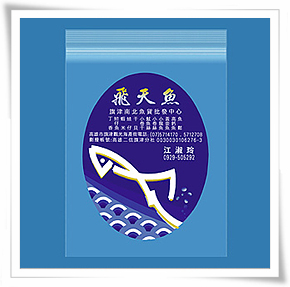食品包裝袋





品名: 犬飼料袋 (食品包裝袋)


食品包裝袋是現代食品產業中不可或缺的重要元素,它不僅保護食品免受污染與損壞,還影響產品的保存期限、運輸安全以及消費者的購買決策。隨著消費者對食品安全與便利性的重視,食品包裝袋的設計與功能也日益多樣化與專業化。
食品包裝袋的首要功能是保鮮與防護。通過阻隔空氣、水氣、光線與微生物入侵,包裝袋能有效延長食品的保質期。常見的材質包括聚乙烯(PE)、聚丙烯(PP)、尼龍(PA)、鋁箔複合膜等,這些材料可根據食品特性進行選擇與搭配,提升包裝的密封性與阻隔性。
食品包裝袋的類型多樣,例如:
夾鏈袋:具可重複封口功能,適合堅果、零食、茶葉等多次取用的食品。
真空袋:常用於生鮮肉品與冷凍食品,抽除空氣以延緩腐敗。
鋁箔袋:具高度阻光與防潮特性,常用於咖啡、藥草等需要避光保存的產品。
自黏袋與熱封袋:適用於糖果、餅乾、麵包等短期消費食品,封口簡便且製作成本低。
除了功能性,食品包裝袋的設計也直接影響消費者的印象與購買意願。現代設計趨勢強調視覺吸引力、透明開窗、簡潔標示與環保標章,提升品牌形象與市場競爭力。
隨著環保意識抬頭,可回收與可降解的食品包裝袋也逐漸受到關注。不少企業開始使用PLA(聚乳酸)等生物可分解材料,或推出減塑包裝解決方案,減少對環境的衝擊。
總而言之,食品包裝袋不僅是產品外包裝,更關係到食品品質、安全、品牌形象與永續發展。在設計與選材上,應根據食品特性、銷售需求與環保考量做出全面規劃,才能在競爭激烈的市場中脫穎而出。
在現代食品包裝中,夾鏈袋已成為廣受歡迎的選擇,無論是家庭使用或商業銷售,其便利性與實用性都備受肯定。相較於傳統的一次性塑膠袋或熱封袋,使用夾鏈袋進行食品包裝具備多項明顯的優勢,尤其在保存效果、消費者體驗與環保意識上更具加分效果。
首先,夾鏈袋最大的優點是可重複開關。這對於需要多次取用的食品(如堅果、餅乾、茶葉、果乾等)特別重要。消費者無需使用橡皮筋或夾子,也不需重新更換容器,只要輕輕一壓即可密封袋口,簡單又方便。這樣的設計提升了使用體驗,也有助於提高顧客對品牌的好感度。
其次,夾鏈袋具備良好的密封性與保鮮功能。夾鏈封口能有效阻隔空氣與水氣進入,延長食品的新鮮度並減少變質風險。對於需要保持乾燥、防潮、防異味的食品而言,這是一種既實用又經濟的解決方案。此外,若採用鋁箔材質或多層複合結構,還可增強光阻與抗氧化能力,進一步提升保存效果。
第三,夾鏈袋便於攜帶與儲存。其柔軟材質可輕鬆放入包包或行李中,無論是在家、辦公室或戶外使用,都非常方便。不少產品包裝還設計成自立式袋型,可直立於桌面或貨架上,便於展示與收納。
第四,夾鏈袋更具環保價值。相較於一次性包裝,夾鏈袋的可重複使用特性可減少包裝廢棄物的產生。許多企業也開始採用可回收材質或環保印刷技術,使產品包裝不僅實用,更兼顧永續理念。
總結來說,食品包裝採用夾鏈袋不僅提升產品保存品質,也改善消費者使用經驗與品牌形象。從實用性到環保層面,夾鏈袋都是食品包裝的理想選擇。對於想要結合功能、美觀與永續發展的食品業者而言,夾鏈袋無疑是一項值得投入與推廣的包裝解決方案。
食品包裝袋是做什麼用的?了解它在生活中的角色
在現代社會,食品包裝袋早已融入我們的日常生活中。從超市購物、外食外送,到家庭儲藏、野餐旅行,幾乎所有與食物有關的活動,都少不了食品包裝袋的參與。這些看似普通的袋子,其實承擔著許多重要功能,不僅關係到食物的新鮮度與安全性,更深深影響消費者的使用體驗與品牌印象。
 食品包裝袋是做什麼用的?了解它在生活中的角色
食品包裝袋是做什麼用的?了解它在生活中的角色
那麼,食品包裝袋到底是做什麼用的?它在生活中扮演什麼樣的角色?本篇文章將從五大面向,帶你全面認識食品包裝袋的功能與價值。
一、保護食物,延長保存期限
最基本的功能就是保護食物。無論是零食、肉類、蔬果或熟食,離開生產線後都需要被妥善包裝,避免受到外部環境的污染與破壞。食品包裝袋能有效阻隔空氣、水分、光線與灰塵,防止食物氧化、變質或受潮,進而延長保存期限,讓產品從工廠安全地送達消費者手中。
例如,真空包裝袋可抽除袋內空氣,減少細菌滋生;鋁箔袋具備遮光與高阻隔性,適合保存咖啡豆、茶葉等對環境敏感的商品。
二、便利儲藏與運輸
食品包裝袋也具備高度的便利性。它讓各式食物能整齊收納,不僅節省空間,也方便運送與堆疊。許多現代包裝袋還設計有夾鏈封口、手提孔、易撕口等功能,方便重複開關、攜帶或分裝,提高使用上的靈活度。
舉例來說,小包裝的餅乾或堅果袋,方便攜帶外出;冷凍食品使用耐低溫包裝袋,直接進冰箱或微波爐加熱也不成問題,滿足現代人對「即食」與「省時」的需求。
三、資訊傳達與品牌識別
除了實體保護,食品包裝袋還是一種資訊傳遞的媒介。袋面印有產品名稱、成分、營養標示、保存方式、有效期限等資訊,幫助消費者做出正確選擇。而精美的設計與印刷,也提升了品牌辨識度,是品牌行銷的重要環節。
例如,一款設計吸睛、色彩鮮明的零食包裝,能在貨架上脫穎而出,吸引顧客目光,增加購買意願。對於企業來說,包裝袋不只是產品外衣,更是品牌形象的延伸。
四、促進環保與減塑風潮
隨著全球環保意識抬頭,食品包裝袋也逐漸從「一次性消耗品」走向「永續包裝」。許多企業開始使用可回收材質、可分解材料或重複使用設計,如PLA生物可分解塑膠、紙質包裝、可重複封口袋等,減少對環境的傷害。
消費者也越來越關注產品包裝是否符合綠色標準,因此,包裝袋不僅承載食物,也逐漸肩負起社會責任,成為推動永續發展的重要一環。
五、提升食品安全與法規合規性
食品包裝袋還承擔食品安全的把關任務。合格的食品袋必須符合相關食品接觸材料規範,例如不含塑化劑、無有毒重金屬殘留、耐高溫或冷凍。許多國家對食品級包裝有明確規定,標示如「食品用」或「食品級」圖示,也是保障消費者健康的重要依據。
對於廠商而言,選用具備合規認證的包裝袋,除了保護顧客權益,也能降低法律風險與品牌信任危機。
結語:包裝袋雖小,作用巨大
食品包裝袋或許只是整個產品中的一個「配角」,但它的功能卻貫穿了食品從生產、運輸、販售到消費的每一個階段。它不僅保護食品品質、提升使用便利、傳遞品牌形象,更反映出現代生活的節奏與消費者對品質與安全的重視。
當我們下一次打開一包零食、倒出冷凍蔬菜,或外帶便當時,不妨留意一下手中的包裝袋。那不只是一層塑膠袋,而是一項充滿功能與設計巧思的現代科技產物。
食品包裝袋是什麼?了解它在生活中的角色與重要性
食品包裝袋是專為裝盛與保護食品所設計的包裝材料,具有防潮、防塵、阻氣、保鮮與衛生等功能,是食品從生產、運輸、販售到消費過程中不可或缺的工具。隨著食品安全意識的提升與包裝科技的進步,食品包裝袋的種類與設計也越來越多元與專業。
✅ 食品包裝袋的主要功能
保鮮延壽命:阻絕空氣、水氣與細菌,延長食品的新鮮期與保存期限。
衛生安全:隔離外界污染,避免食品接觸灰塵、細菌與異味。
便利攜帶與銷售:易於搬運、陳列與使用,提升消費者購買意願。
資訊傳達與行銷:透過印刷標籤展示品牌、成分、有效期限與營養標示。
分裝與防漏:適合液體、粉末、固體等不同型態的食品,確保包裝完整。
食品包裝袋是什麼?了解它在生活中的角色與重要性
食品包裝袋是專為裝盛與保護食品所設計的包裝材料,具有防潮、防塵、阻氣、保鮮與衛生等功能,是食品從生產、運輸、販售到消費過程中不可或缺的工具。隨著食品安全意識的提升與包裝科技的進步,食品包裝袋的種類與設計也越來越多元與專業。
✅ 食品包裝袋的主要功能
保鮮延壽命:阻絕空氣、水氣與細菌,延長食品的新鮮期與保存期限。
衛生安全:隔離外界污染,避免食品接觸灰塵、細菌與異味。
便利攜帶與銷售:易於搬運、陳列與使用,提升消費者購買意願。
資訊傳達與行銷:透過印刷標籤展示品牌、成分、有效期限與營養標示。
分裝與防漏:適合液體、粉末、固體等不同型態的食品,確保包裝完整。
食品包裝袋是現代食品產業中不可或缺的基本材料,不僅關乎產品的保存、安全與運輸便利性,更直接影響消費者對品牌的第一印象。從乾貨到冷凍食品,從液體到粉末狀商品,食品包裝袋的應用範圍廣泛,並隨著市場需求與環保趨勢持續進化。
✅ 食品包裝袋的功能與價值
保鮮延壽命:阻隔空氣、水氣與污染物,延長食品保存期限。
防潮防漏:避免食材受潮、變質、滲漏,維持食品風味與品質。
食品衛生:防止細菌、灰塵或異物進入,符合食品安全標準。
品牌形象建立:客製印刷LOGO與商品資訊,提升品牌辨識度與專業感。
運輸與陳列便利:結構設計便於堆疊、展示與搬運,提升倉儲效率與銷售表現。
食品包裝袋的關鍵特性|從安全性到行銷力全面分析
在現代食品產業中,包裝不再只是裝載商品的外殼,更是食品品質、品牌形象與消費者體驗的綜合體現。食品包裝袋承擔的不僅是保存與保護功能,更是企業與市場溝通的重要介面。本文將從安全性、功能性、便利性與行銷力等面向,全面解析食品包裝袋的關鍵特性。
✅ 一、安全性:食品接觸的第一道防線
食品包裝袋的安全性直接關係到消費者健康,是最基本也是最重要的特性:
食品級材料:常用材質如 PE、PET、CPP、NY 等,需通過 SGS、FDA、HACCP 等國際認證,確保不含重金屬、塑化劑與毒性物質。
抗污染能力:良好的密封與防滲設計可防止細菌、灰塵與異物入侵,維持食品衛生。
耐溫與穩定性:需根據食品性質選擇耐冷、耐熱、不釋放有害氣體的安全材質,適用冷凍、微波或高溫加熱。
✅ 二、功能性:確保食品品質與保存期限
食品包裝袋的功能直接影響食品的新鮮度與使用壽命,包括:
氣密性與阻隔性:防止氧氣、水氣滲入,延緩食品氧化或受潮。
防漏設計:針對醬料、飲品等流體食品,需具備高強度封口與多層複合材質。
遮光與抗UV功能:對光敏感的食品如茶葉、咖啡、油品等需使用鋁箔或深色膜材,避免光照變質。
✅ 三、便利性:提升使用體驗與產品實用性
一個好包裝不僅要保護產品,更要方便使用者操作與攜帶:
夾鏈封口:可重複開合,適合零食、乾貨等多次取用的食品。
自立袋設計:底部可站立,便於陳列與儲存,外觀挺拔。
易撕口與吊孔:方便開袋與懸掛展示,適用於零售與超商貨架。
✅ 四、行銷力:強化品牌識別與消費者吸引力
食品包裝袋同時也是企業的「無聲業務員」,具有傳遞品牌價值與吸引目光的任務:
彩色印刷與客製設計:可印上LOGO、產品圖像、使用方式與營養標示,強化品牌印象。
透明視窗設計:展現產品內容,增加消費者信任與購買慾望。
一致性設計風格:讓包裝成為品牌形象的一部分,提高商品系列感與記憶點。
✅ 五、永續與環保性:符合綠色消費趨勢
近年來消費者愈加重視環保與可持續性,食品包裝袋也必須朝向友善環境的方向發展:
可回收材質(如PE單一材料袋)
可分解生物材料(如PLA、紙塑複合材)
減塑設計、無印刷或低墨印刷
導入環保概念,不僅可降低對環境的衝擊,也能提升品牌好感度與社會責任形象。
